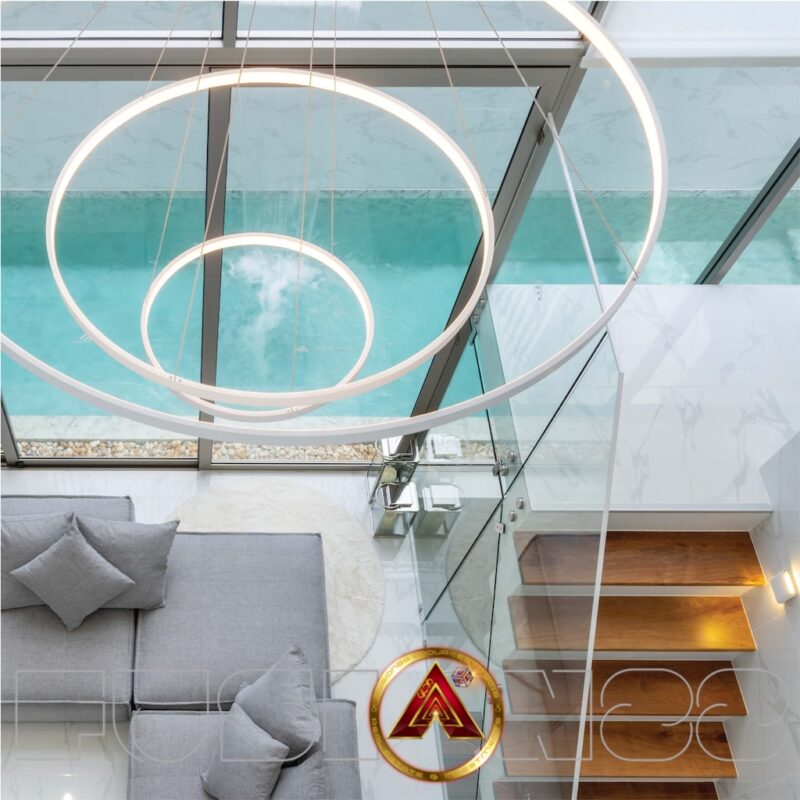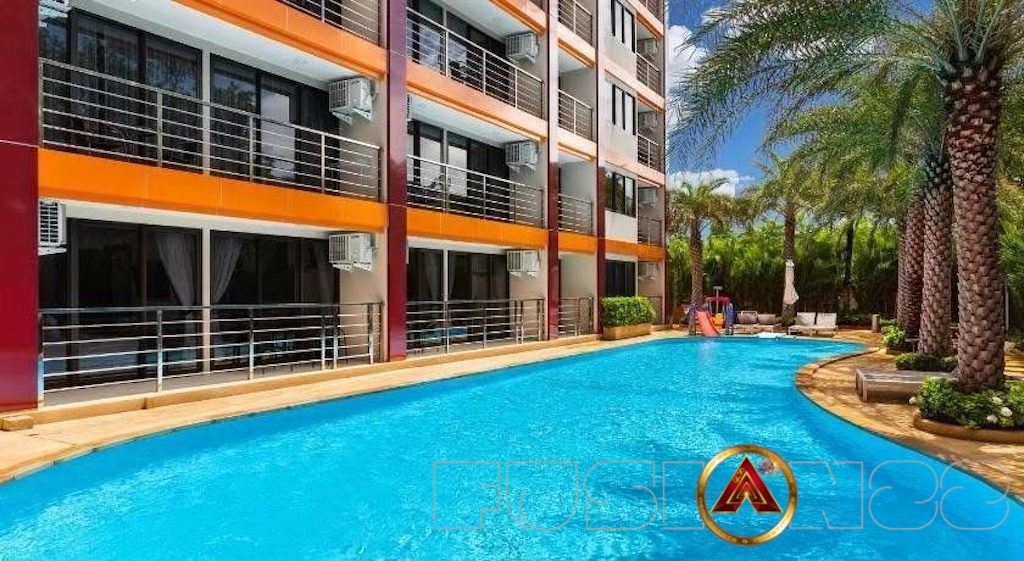Thailand Condos
For both seasoned and new investors alike, rental yields are an indispensable gauge of profitability in the real estate sector. Understanding these yields – particularly condo rental yields – can appear to be a daunting task. However, you’re not alone in this journey. As a real estate website attuned to the needs and pain points of investors, we’re here to guide you through the intricacies of rental yield calculations. Whether you’re a starting out or veteran investor , we’ll show you why understanding rental yields is important to your investment decisions.
What is Rental Yield?
Rental yield is a fundamental concept in the realm of real estate investment. It signifies the return on your investment, providing a snapshot of how much cash your property generates each year as a percentage of its value. It’s applicable to various types of real estate, such as residential properties, commercial properties, and of course, industrial properties.
1. Residential Real Estate:
Residential real estate encompasses properties tailored for personal or familial occupancy, spanning single-family homes, apartments, condominiums, townhouses, duplexes, pool villas, and holiday residences. In Thailand’s bustling hubs like Bangkok and Phuket, condos was a preferred residential choice among the local and expatriate communities.
2. Commercial Real Estate:
Commercial real estate refers to properties used exclusively for business purposes. These include office buildings, shopping centers (centres), malls, hotels, restaurants, and other retail spaces. In some cases, large apartment buildings are also considered commercial real estate due to their income-generating nature.
3. Industrial Real Estate:
Industrial real estate involves properties used for industrial purposes. This includes warehouses, manufacturing facilities, research and development parks, and distribution centers (centres). These properties are usually located outside of urban areas due to their size and the specific requirements of industrial operations.
How is Rental Yield Calculated?
The basic calculation of rental yield, whether it’s gross or net rental yield, remains the same across different types of properties, including residential, commercial, and industrial real estate. This is because rental yield at its core is simply a measure of the annual rental income generated by a property as a percentage of its value.
Nonetheless, the parameters used in the rental yield computation can notably vary based on the property type. For instance, a residential condo, a retail outlet, and a warehouse will each have distinct rental incomes, expenses, and property values. Also, particular property types may incur exclusive expenses.
Now, let’s simplify things for you by breaking down rental yield into two main categories: Gross Rental Yield and Net Rental Yield. These may sound complex, but worry not! We’ll define each of these and illustrate them with practical examples featuring.
Gross Rental Yield offers a rudimentary perspective on a rental property’s profitability, calculated by dividing the yearly rental income by the property’s value and converting it into a percentage.
Net Rental Yield presents a more precise depiction of the actual return on investment. This is determined by subtracting all annual property-related costs from the yearly rental income, dividing this net income by the property’s value, and finally, converting it to a percentage.
Gross Rental Yield
To calculate the gross rental yield, perform the following steps:
- Establish the total annual rental income from your property.
- Divide this income by the market value of your property.
- Multiply the resulting value by 100 to express the yield as a percentage.
Gross rental yield is a more straightforward calculation as it doesn’t factor in these expenses:
Gross Rental Yield = Annual rental income / Property value * 100%
Let’s say you own a unit in The Title Condo Residences, which you bought for 4,000,000 THB (Thai Baht). You rent it out for 35,000 THB per month.
Step 1: Calculate the annual rental income: 35,000 THB (monthly rent) * 12 (months) = 420,000 THB.
Step 2: Compute the Gross Rental Yield by dividing the annual rental income by the property value, and then multiplying the result by 100.

Net Rental Yield
Net Rental Yield gives you a more realistic picture of your returns as it accounts for additional costs such as maintenance, vacancies, property management fees, and insurance. Here’s how you calculate it:
The net rental yield requires a more comprehensive computation:
- Determine the total annual expenses associated with property ownership.
- Calculate the total annual rental income from your property.
- Subtract the total expenses from the annual rental income.
- Divide this net income by the property value.
- Multiply the result by 100 to find your yield as a percentage.
Your expenses may include costs such as:
- Property repairs and maintenance
- Homeowner association dues
- Local taxes
- Property management and advertising fees
- Insurance premiums
- Depreciation
However, interest on your investment loan is typically not included in this calculation. This is because it’s linked more closely to your personal financial circumstances rather than the inherent costs of the property.
Net Rental Yield = (Annual rental income – Annual expenses) / Property value * 100%
Assume that the total annual expenses for the property (including costs such as management fees, maintenance, and insurance) amount to 100,000 THB.
Step 1: Determine the net income by subtracting the annual expenses from the annual rental income: 1,020,000 THB (annual rental income) – 100,000 THB (annual expenses) = 920,000 THB.
Step 2: Calculate the Net Rental Yield by dividing this net income by the property value, and then multiplying the result by 100.
Applying these calculations reveals a Gross Rental Yield of 5.1% for your condo in The Title Condo, Phuket, while the Net Rental Yield (after accounting for property-related expenses) stands at 4.6%. These yield percentages provide insight into your investment return, facilitating a more accurate comparison of diverse investment prospects.
What is a Good Rental Yield?
Determining a “good” rental yield can be quite subjective, largely dependent on market conditions, the specific property, and an individual investor’s expectations. Generally, a rental yield between 4-6% is considered decent, especially in cities with high property values such as Phuket and Bangkok.
Let’s consider the case of condos in Phuket and Bangkok. The property markets in these two popular Thai cities are significantly influenced by their respective tourism sectors and economic conditions.
Phuket, known for its idyllic beaches and luxury resorts, draws a mix of short-term holidaymakers and longer-term visitors. The condos here might have higher vacancy rates due to the seasonal nature of tourism but can command higher rents during peak tourist seasons.
On the other hand, Bangkok, as a bustling metropolis, is rapidly developing into a hub for Meetings, Incentives, Conferences, and Exhibitions (MICE) as well as a digital economy centre. This transformation has increased the demand for longer-term accommodation, particularly among tech workers and highly educated professionals. These demographics typically seek quality condos in convenient locations, contributing to steady rental demand.
Rental Yields Comparison in Bangkok Condos
In Bangkok, let’s compare condos in Phra Khanong and Asoke, two of the most popular locations, focusing specifically on 1-bedroom units in each area.

A property in Phra Khanong could provide an investor the opportunity to tap into an up-and-coming area, offering the potential for capital appreciation. A one-bedroom unit here might appeal to young professionals and expatriates who are attracted by the area’s unique mix of local charm and modern lifestyle.
Meanwhile, a 1-bedroom unit in Asoke could appeal to city dwellers who prioritize convenience and accessibility. Despite higher purchase prices in this prime area, the potential for strong, steady rental demand could result in attractive rental yields.
Rental Yields Comparison in Phuket
Meanwhile, condos located in popular areas of Phuket, such as Kamala and Patong, also yield promising returns. Let’s proceed by comparing the potential rental yields from 1-bedroom and 2-bedroom units in these respective locations.

Patong, known as Phuket’s party capital, is famed for its vibrant nightlife and attractive beach. One-bedroom condos here are appealing to short-term tourists looking for fun and convenience. The high turnover of visitors could mean a steady stream of rental income, although it might come with increased maintenance costs.
Kamala, on the other hand, is a more serene and family-friendly area, known for its beautiful beach and the Carnival Magic renamed from the new owner which the origin name was (Phuket Fantasea) theme park. A one-bedroom unit here might appeal to longer-term renters seeking tranquility, resulting in fewer tenant turnovers and potentially lower maintenance costs.









